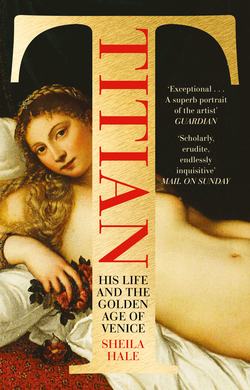Читать книгу Titian: His Life and the Golden Age of Venice - Sheila Hale - Страница 6
ОглавлениеAny style involves first of all the artist’s connection to his or her own time, or historical period, society, and antecedents: the aesthetic work, for all its irreducible individuality, is nevertheless a part – or, paradoxically, not a part – of the era in which it was produced and appeared.
EDWARD S. SAID, ON LATE STYLE, 2006
Titian lived and painted in tremendous times. In the decades before he was born, in a remote province of the Venetian Empire, the invention of movable type in Germany had unleashed an unprecedented and unstoppable spread of ideas and information across Europe and beyond. Columbus’ maiden voyage from Spain to the new world in 1492, when Titian was a small child, changed the European consciousness of the size and shape of the planet; and the bullion imported from the Americas brought with it massive inflation and eventually shifted the balance of trade and wealth from the Mediterranean to the Atlantic. In 1513, when Machiavelli published The Prince, the first modern work of political philosophy, Michelangelo had recently completed the ceiling of the Sistine Chapel, Raphael was at work on the four Stanze in the Vatican, and Leonardo da Vinci was an old man living in Rome. Four years later in the German town of Wittenberg Martin Luther, reacting against the sale of indulgences by Pope Leo X, posted his Ninety-Five Theses on the castle door. Few at the time predicted the consequences. Luther himself had not envisaged a split with the Catholic Church, and the word Protestant was not used until 1529. But by 1563 when Titian was in his early seventies and the Council of Trent sat for the last of the three sittings that set the agenda for the Catholic Reformation, northern Europe was irredeemably divided between Catholics and Protestants; and Venice, which had been the most independent of all the Italian city states and the least prescriptive about matters of religion, began to pay heed to the dictates of the Roman Catholic Church.
When Titian died in Venice in 1576 he was in his late eighties, and the Most Serene Republic had begun its long slow decline as a great trading power and artistic centre. He had spent the whole of his working life there, travelling as little as possible and only twice outside the Italian peninsula for two short visits to Germany. He had produced some 500 or 600 paintings of which about half survive.1 They are now scattered around the globe, most of them in public galleries from New York to California and Brazil; and across Europe from St Petersburg to Vienna, Berlin, Florence, London and Madrid, to mention only the largest collections. Despite frequent temporary exhibitions of his pictures it would be difficult for any one person to see all the originals and follow the extraordinary transformation of Titian’s style from the radiant, minutely realized masterpieces of his youth to the more freely painted works of his middle years, to the dark, tragic, sometimes terrifying visions of his last years.
More has been written about Titian than about any other Renaissance artist apart from Michelangelo. There were two biographies of him in his own lifetime: the Venetian writer Lodovico Dolce’s L’Aretino published in 1557 and Giorgio Vasari’s ‘Life of Titian’ in the second, 1568, edition of his Lives of the Artists; two more in the next century by an anonymous writer who may have been a distant relative (1622) and by Carlo Ridolfi in his Marvels of Art (1648), as well as numerous letters written to, by and about him. Over successive centuries writers and artists have explored and described his paintings and the spell they cast. This book, however, is the first documented attempt since the pioneering Anglo-Italian art historians J. A. Crowe and G. B. Cavalcaselle published their Titian: His Life and Times as long ago as 18772 to chart Titian’s stylistic development through the story of his life and of the century in which he became the most famous artist in Europe, painter to its most powerful rulers.
Since Crowe and Cavalcaselle, art history has been taught in schools and universities as a specialized subject, and Titian Studies have become something of an academic industry. Archives in Venice and elsewhere have yielded much more evidence than was available in the nineteenth century, so that we now know more about Titian’s personality, family, friends, finances and relationships with his patrons than we do about most other Renaissance artists. Modern scientific techniques, furthermore, have enabled painting conservators to follow Titian’s working methods by looking beneath the surface of his paintings.3 Nevertheless, since no one person can do justice to an artist as great, protean and complex as Titian, I have allowed some of the many voices that have explored, praised – and very occasionally doubted – his genius to have their say.
I have tried where possible to correct errors of fact about Titian that have been repeated so often that they’ve become almost canonical. There are, however, still blanks in our knowledge. Perhaps some will be filled as new evidence and paintings thought to have been lost are discovered. Nothing, however, will diminish the sheer visceral pleasure, the shock of recognition that we are looking at a kind of truth that few other painters have communicated, that has fascinated Titian’s admirers and followers for more than five centuries.
